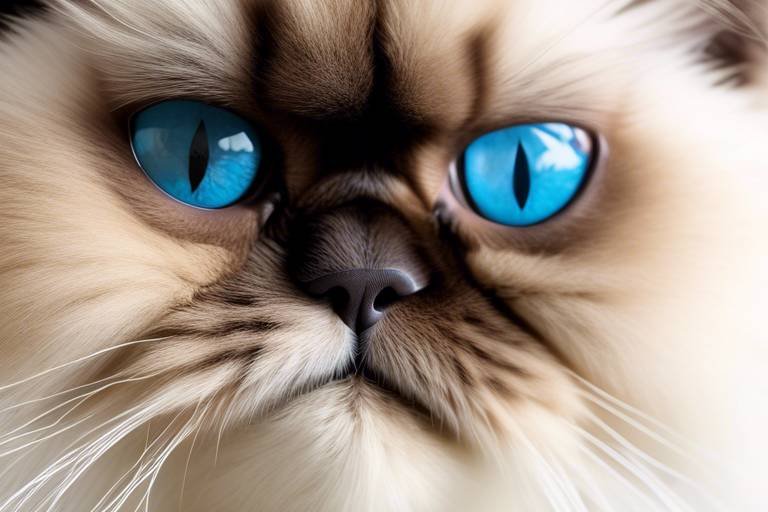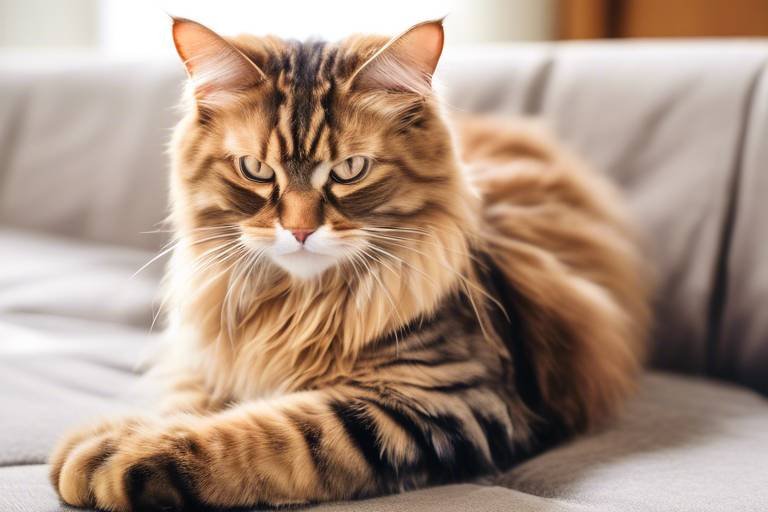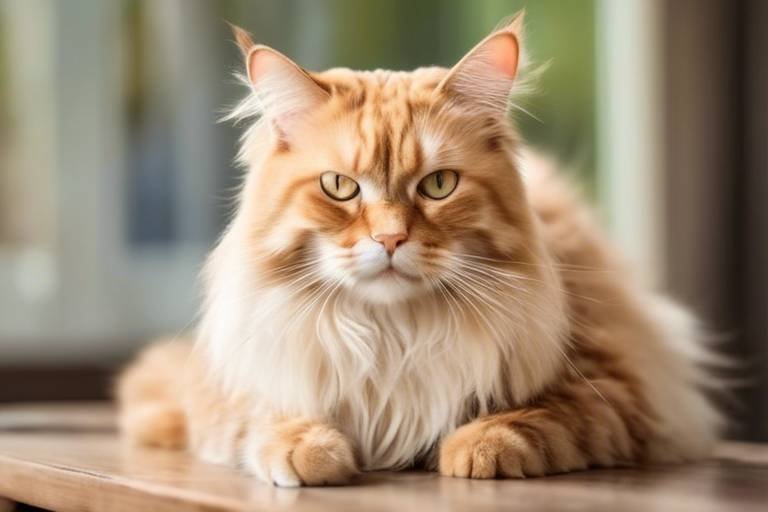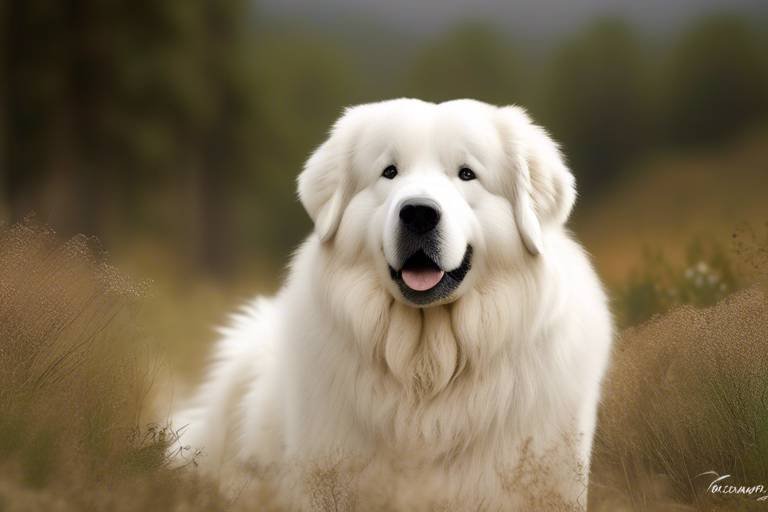The Gentle Spirit of the Russian Blue Cat
The Russian Blue cat is not just a pretty face; it's a breed that carries a gentle spirit and a rich history that has captivated cat lovers worldwide. With their stunning looks and affectionate nature, these cats have become cherished companions in many homes. But what makes the Russian Blue so special? Let’s dive into their unique characteristics, history, and care needs to understand why they are beloved by so many.
The Russian Blue cat has a fascinating history that traces back to the 19th century, with roots deeply embedded in Russia. Initially, these cats were known as the "Archangel Blues," named after the port city of Arkhangelsk, where they were believed to have originated. Their striking blue fur and bright green eyes caught the attention of cat fanciers, leading to their recognition in various cat shows during the late 1800s. Interestingly, during World War II, the breed faced near extinction, but thanks to dedicated breeders, the Russian Blue made a remarkable comeback, preserving its unique lineage and charm.
When it comes to physical traits, the Russian Blue cat is truly a sight to behold. Their dense, plush fur not only feels luxurious but also gives them a unique appearance that sets them apart from other breeds. One of the most striking features of the Russian Blue is their vivid green eyes, which seem to sparkle and convey a sense of intelligence and curiosity. The combination of their elegant body structure and soft, silvery-blue coat creates an aura of grace that is hard to resist.
The coat of a Russian Blue is one of its defining characteristics. This breed boasts a unique shade of blue that is rich and shimmering, often described as having a silvery sheen. The color is not just a visual treat; it also serves a purpose, as the dense fur helps keep them warm in colder climates. Unlike other breeds, their coat is double-layered, providing insulation and a soft texture that begs to be stroked. But this beauty comes with a responsibility—proper grooming is essential to maintain their coat's health and luster.
To keep your Russian Blue's coat in tip-top shape, regular grooming is crucial. Their thick fur can mat if not cared for properly, so brushing them at least once a week is recommended. Use a soft brush to gently remove loose hair and dirt, and don't forget to check for any tangles or knots. Additionally, regular baths are not necessary, but if your cat gets particularly dirty, a gentle shampoo designed for cats can help maintain their coat's beauty.
Like all breeds, Russian Blues can face certain health challenges. While they are generally healthy, some common health issues include:
- Hypertrophic Cardiomyopathy (HCM)
- Urinary Tract Issues
- Dental Problems
To ensure your Russian Blue remains healthy, regular vet check-ups are essential. Keeping up with vaccinations and preventive care can help catch any potential issues early, allowing for timely intervention.
Russian Blues are renowned for their gentle and affectionate nature. They tend to be reserved around strangers but are incredibly loyal and loving to their families. Their calm demeanor makes them ideal companions for families with children or other pets. They are not overly demanding, preferring a peaceful environment where they can lounge and observe their surroundings. This breed is also known for its playful side, often engaging in gentle games that stimulate their minds and keep them active.
Training a Russian Blue can be a rewarding experience, as they are intelligent and eager to please. Positive reinforcement techniques work best with this breed, so be sure to reward them with treats and praise when they follow commands. Socialization is also crucial during their early years; exposing them to various people, pets, and environments can help shape a well-adjusted adult cat.
Russian Blues are not just beautiful; they are also incredibly smart. Engaging them in interactive playtime is essential to keep their minds sharp. Consider using puzzle toys or feather wands to stimulate their natural hunting instincts. Regular play not only helps keep them physically fit but also strengthens the bond between you and your feline friend.
Building a strong bond with your Russian Blue is essential for a happy relationship. Spend quality time together, whether it’s through play, grooming, or simply relaxing on the couch. Every moment you invest in nurturing your connection will pay off in the form of a loving and loyal companion.
Proper care and nutrition are vital for a Russian Blue's health and longevity. These cats require a balanced diet rich in high-quality protein to support their active lifestyle. It's essential to choose cat food that meets their nutritional needs, considering their age, weight, and activity level. Always consult with your veterinarian to determine the best diet for your furry friend.
Understanding the dietary requirements of a Russian Blue is crucial. Here are some feeding guidelines:
- Provide high-quality cat food, either dry or wet, that is appropriate for their age.
- Monitor portion sizes to prevent obesity.
- Ensure fresh water is available at all times.
Routine vet visits are essential for monitoring your cat's health. Regular check-ups and vaccinations can help catch any potential issues early, allowing for timely treatment. Remember, a healthy cat is a happy cat, and investing in their health will lead to many joyful years together.
1. How long do Russian Blue cats live?
Typically, Russian Blue cats have a lifespan of 15 to 20 years, especially with proper care and nutrition.
2. Are Russian Blues hypoallergenic?
While no cat is completely hypoallergenic, Russian Blues are known to produce lower levels of allergens compared to other breeds, making them a better choice for allergy sufferers.
3. Do Russian Blues get along with other pets?
Yes, with proper socialization, Russian Blues can get along well with other pets, including dogs and other cats.
4. How much grooming do Russian Blue cats need?
Regular brushing at least once a week is recommended to keep their coat healthy and free of mats.

Origin and History
This article explores the unique characteristics, history, and care needs of the Russian Blue cat, showcasing why they are beloved companions for many pet owners around the world.
The Russian Blue cat has a rich and intriguing history that dates back to the 19th century, with its origins firmly rooted in Russia. These elegant felines were first recognized in the late 1800s, making their debut in cat shows and quickly capturing the hearts of many. The breed is believed to have descended from cats that lived in the port city of Arkhangelsk, where they were known for their stunning appearance and gentle demeanor. During this time, they were often associated with Russian nobility, which added to their mystique and appeal.
Interestingly, the Russian Blue's history intertwines with the tumultuous events of the early 20th century. As World War I and the Russian Revolution unfolded, many of these cats found their way to other countries, particularly the United Kingdom and the United States. This migration helped to establish the breed outside of its homeland, allowing it to gain popularity across the globe. Today, the Russian Blue is recognized by various cat registries, including the Cat Fanciers' Association (CFA) and the International Cat Association (TICA), further solidifying its status as a cherished breed.
One of the most fascinating aspects of the Russian Blue's history is its connection to folklore and culture. In Russia, these cats were often seen as symbols of good luck and prosperity. They were believed to bring happiness to their owners and were sometimes even associated with the supernatural. This cultural reverence has contributed to the breed's enduring popularity and has helped to shape the affectionate nature of these cats.
As we continue to explore the unique traits of the Russian Blue, it's essential to recognize how their historical journey has influenced their personality and behavior. The gentle spirit of the Russian Blue is not just a product of breeding; it is also a reflection of their rich heritage and the love they have received throughout the years.
- What is the average lifespan of a Russian Blue cat? Russian Blues typically live between 15 to 20 years when cared for properly.
- Are Russian Blue cats hypoallergenic? While no cat is completely hypoallergenic, Russian Blues are known to produce lower levels of allergens compared to other breeds.
- Do Russian Blues get along with other pets? Yes, they are generally friendly and can adapt well to living with other cats and even dogs if properly socialized.
- How often should I groom my Russian Blue? Regular grooming is recommended, ideally once a week, to keep their coat healthy and reduce shedding.

Physical Characteristics
The Russian Blue cat is a stunning breed that captivates the hearts of many with its unique physical attributes. One of the most striking features of this breed is its dense, plush coat, which is not only beautiful but also serves as a protective layer against harsh climates. Their fur is a distinctive shade of blue-gray, which can often appear to shimmer in the light, giving them an almost ethereal quality. This enchanting coat is complemented by their vivid green eyes, which are large, round, and expressive, providing a striking contrast to their fur. When you look into the eyes of a Russian Blue, it feels as though you are peering into a world of calm and serenity.
In addition to their beautiful coat and eyes, Russian Blues boast a well-proportioned body that is both muscular and elegant. They typically have a medium build, which gives them an agile and graceful appearance. Their legs are long and slender, and their paws are rounded, adding to their overall elegance. The breed's head is shaped like a wedge, with a flat forehead and a straight nose, which further enhances their distinctive look. Their ears are large and pointed, standing tall and alert, always ready to catch the slightest sound.
To better understand the physical characteristics of the Russian Blue, let's take a closer look at some key features:
| Characteristic | Description |
|---|---|
| Coat Color | Blue-gray with a shimmering effect |
| Eye Color | Vivid green |
| Body Structure | Medium build, muscular, and elegant |
| Head Shape | Wedge-shaped with a flat forehead |
| Ears | Large and pointed, alert |
One of the most delightful aspects of the Russian Blue is their grooming needs. Their coat requires regular brushing to prevent matting and to keep it looking its best. Fortunately, they are relatively low-shedding, which makes them a great choice for those who may have allergies. A simple weekly grooming session can help maintain their beautiful fur, allowing you to bond with your furry friend while keeping them looking fabulous.
In summary, the physical characteristics of the Russian Blue cat are not just about beauty; they embody a sense of grace and elegance that is hard to resist. Their striking appearance, combined with their gentle demeanor, makes them a beloved choice for cat lovers around the world. Whether you are drawn in by their stunning coat or their captivating eyes, one thing is for sure: a Russian Blue is a true treasure.
- What is the average lifespan of a Russian Blue cat? Russian Blues typically live between 15 to 20 years with proper care.
- Are Russian Blues hypoallergenic? While no cat is completely hypoallergenic, Russian Blues produce lower levels of allergens compared to other breeds.
- Do Russian Blues get along with other pets? Yes, they are generally friendly and can adapt well to living with other pets.
- How much exercise do Russian Blues need? They are playful and enjoy interactive playtime, so regular exercise is essential for their well-being.
Coat and Color
The Russian Blue cat is truly a sight to behold, and one of the most striking aspects of this breed is its gorgeous coat. The fur is not just any ordinary coat; it’s a dense, plush layer that feels almost like velvet to the touch. This luxurious texture is a defining feature of the breed, making them incredibly appealing to pet lovers everywhere. The coat is a beautiful shade of blue-gray, which is often described as having a silvery sheen. This unique color is what sets the Russian Blue apart from other breeds, giving them an air of elegance and sophistication.
What makes their coat even more fascinating is the way it appears to change in different lighting. In bright light, the blue-gray hue shines vibrantly, while in dimmer conditions, it can take on a more muted tone. This dynamic quality adds depth to their overall appearance, captivating anyone who lays eyes on them. Moreover, the Russian Blue's coat is double-layered, consisting of a soft undercoat that provides warmth and insulation, and a longer, guard hair layer that protects against the elements.
To maintain this stunning coat, regular grooming is essential. The Russian Blue does not shed excessively, but they do benefit from weekly brushing to remove loose hairs and prevent matting. This grooming ritual not only keeps their coat looking its best but also provides an opportunity for bonding between you and your feline friend. A little grooming goes a long way in ensuring that your Russian Blue remains a picture of health and beauty.
In addition to their remarkable coat, the Russian Blue's eyes are another standout feature. Their vivid green eyes create a striking contrast against their blue-gray fur, enhancing their overall charm. This eye color is one of the breed's most characteristic traits, often leaving onlookers mesmerized. The combination of the rich coat color and those captivating eyes creates a visual impact that is hard to forget.
In summary, the coat and color of the Russian Blue cat are not just about aesthetics; they reflect the breed's history and personality. Their unique fur and eye color contribute to their reputation as one of the most beautiful cat breeds in the world. Whether you are an experienced cat owner or considering adopting your first pet, the Russian Blue’s striking appearance is sure to capture your heart.
Texture and Maintenance
The Russian Blue cat is not just a pretty face; it boasts a coat that is as unique as its personality. The texture of their fur is often described as dense and plush, giving it a soft, velvety feel that is simply irresistible to touch. This remarkable coat is a result of a double-layered structure, which not only enhances their beauty but also provides insulation against the cold, making them well-suited for their native Russia. However, this luxurious fur requires a bit of attention to keep it looking its best.
To maintain the stunning appearance of your Russian Blue's coat, regular grooming is essential. Ideally, you should brush your cat at least once a week. This not only helps to remove loose hair and prevent matting but also distributes natural oils throughout their fur, which keeps it shiny and healthy. When grooming, it's important to use a soft-bristle brush or a slicker brush to avoid irritating their skin. Here's a quick overview of the grooming process:
| Grooming Step | Description |
|---|---|
| Brushing | Brush at least once a week to remove loose fur and prevent matting. |
| Bathing | Only bathe when necessary, as over-bathing can strip natural oils. |
| Inspection | Regularly check for any signs of skin issues or parasites. |
In addition to brushing, you should also keep an eye on their bathing needs. Russian Blues generally do not require frequent baths, as their coat is designed to repel dirt and odors. However, if they get into something particularly messy or if they have been outside, a gentle bath using a mild cat shampoo can help. Just remember that too much bathing can lead to dry skin, so it's best to limit it to only when absolutely necessary.
Another important aspect of maintenance is to regularly check their ears and eyes. Russian Blues are prone to some health issues, including allergies, which can lead to discharge from the eyes or ears. Cleaning these areas gently with a damp cloth can help keep them healthy and comfortable.
Lastly, don't forget about their nails! Regular nail trimming is essential to prevent overgrowth and potential injury. If you're unsure how to trim your cat's nails, consider consulting your veterinarian or a professional groomer for guidance.
In summary, the texture and maintenance of a Russian Blue's coat are vital for their overall health and appearance. With a little effort and regular grooming, you can ensure that your feline friend remains as stunning as the day you brought them home.
- How often should I groom my Russian Blue? - It's best to brush them at least once a week.
- Do Russian Blues need baths? - They typically do not need frequent baths unless they get particularly dirty.
- What should I do if I notice discharge from my cat's eyes? - Consult your veterinarian, as it could indicate an allergy or other health issue.
Common Health Issues
The Russian Blue cat is generally known for its robust health and longevity, but like any breed, they can be prone to certain health issues. Understanding these potential problems is crucial for any cat owner who wants to ensure their furry friend lives a long and happy life. One of the most common health concerns among Russian Blues is hypertrophic cardiomyopathy (HCM), a genetic condition that affects the heart muscle, making it thicker and potentially leading to heart failure. Regular veterinary check-ups can help catch this issue early, allowing for timely intervention.
Another concern is obesity, which can be particularly detrimental to the overall health of a Russian Blue. These cats love to eat, and their affectionate nature may lead them to beg for food or indulge in treats. It’s essential to monitor their diet closely and ensure they maintain a healthy weight. Obesity can lead to a multitude of health problems, including diabetes and joint issues, which can severely impact their quality of life.
Additionally, Russian Blues may be susceptible to gingivitis and other dental issues due to their unique jaw structure. Regular dental care, including brushing their teeth and providing dental treats, can help keep their gums and teeth healthy. It’s also important to be aware of allergies, which can manifest as skin irritations or respiratory issues. If you notice your cat scratching excessively or showing signs of discomfort, consulting with a veterinarian is crucial.
To summarize, here are some common health issues to keep an eye on:
- Hypertrophic cardiomyopathy (HCM)
- Obesity
- Gingivitis and dental problems
- Allergies
Being proactive about your cat's health can make a world of difference. Regular veterinary visits, a balanced diet, and proper dental care are all essential components of maintaining your Russian Blue's health. By staying informed and attentive, you can help your beloved companion thrive for many years to come.
Q: How often should I take my Russian Blue to the vet?
A: It's recommended to take your Russian Blue for a veterinary check-up at least once a year. More frequent visits may be necessary as they age or if any health issues arise.
Q: What is the best diet for a Russian Blue?
A: A high-quality, protein-rich diet is ideal for Russian Blues. Look for cat food that lists meat as the first ingredient and is tailored for their age and health needs.
Q: Do Russian Blues have any specific grooming needs?
A: Russian Blues have a dense double coat that requires regular brushing, at least once a week, to prevent matting and reduce shedding. They are relatively low-maintenance compared to other breeds.
Q: Are Russian Blues good with children and other pets?
A: Yes, Russian Blues are known for their gentle and affectionate nature, making them great companions for children and other pets. However, early socialization is important to ensure they adapt well.
Q: How can I keep my Russian Blue active and engaged?
A: Interactive toys, puzzle feeders, and regular playtime with their owners can help keep your Russian Blue mentally and physically stimulated. They enjoy activities that challenge their intelligence.
Temperament and Behavior
The Russian Blue cat is often described as a gentle spirit, and it's easy to see why. With their affectionate nature and calm demeanor, these felines make for exceptional companions. Unlike some breeds that may be overly energetic or skittish, the Russian Blue possesses a balanced temperament that combines playfulness with a serene attitude. They are known to be loyal and devoted to their families, often forming strong bonds with their human companions.
One of the most endearing traits of the Russian Blue is their intelligence. These cats are not just pretty faces; they are quick learners and enjoy engaging in activities that challenge their minds. Whether it's solving a puzzle toy or learning new tricks, their inquisitive nature keeps them entertained and mentally stimulated. This makes them a joy to train, as they respond well to positive reinforcement methods.
Socialization plays a crucial role in shaping the temperament of a Russian Blue. From a young age, exposing them to various environments, sounds, and people can help them develop into well-rounded adults. They tend to be reserved with strangers but are incredibly affectionate with their family members. It's not uncommon for a Russian Blue to follow their owner around the house, seeking companionship and interaction. They thrive on love and attention, often curling up next to their favorite humans or playfully batting at a dangling string.
In terms of behavior, Russian Blues are generally calm and composed. They are not known for being overly vocal, which can be a blessing for those who prefer a quieter home. However, when they do choose to communicate, their soft chirps and gentle purrs are music to the ears. Their playful side emerges during playtime, where they exhibit bursts of energy, chasing after toys or engaging in a game of hide-and-seek. It's this combination of tranquility and playfulness that makes them such delightful companions.
To sum it up, the Russian Blue cat is a true gem in the feline world. Their gentle temperament, intelligence, and affectionate nature make them perfect for families and individuals alike. They are not just pets; they are family members who bring joy, companionship, and a touch of elegance to any household. If you're considering adding a Russian Blue to your life, prepare for a loyal friend who will enrich your days with their charming personality.
- Are Russian Blue cats good with children?
Yes, Russian Blues are known for their gentle nature and can adapt well to families with children. - Do they require a lot of grooming?
While their coat is dense, regular brushing a few times a week is usually sufficient to keep it healthy. - How do Russian Blues behave with other pets?
They tend to be friendly and can get along with other cats and even dogs if properly socialized. - What is their average lifespan?
With proper care, Russian Blues can live anywhere from 15 to 20 years, making them long-term companions.

Training and Socialization
Training a Russian Blue cat is not just about teaching them tricks; it’s about establishing a strong bond and understanding between you and your furry friend. These cats are known for their intelligence and curiosity, making them surprisingly easy to train when approached with patience and positivity. Picture this: your Russian Blue, sitting on command, or even giving you a high-five! Sounds fun, right? The key is to use positive reinforcement techniques, such as treats and praises, to motivate them.
Socialization is equally important for your Russian Blue. They thrive in environments where they feel secure and loved. Early socialization helps them become well-adjusted adults. This means introducing them to various people, pets, and situations. Start by gently exposing your cat to different noises, sights, and smells in your home. Gradually increase their exposure to new experiences, ensuring these interactions are positive. Think of it as a gentle journey into the world—each step taken with care and consideration.
One effective way to socialize your Russian Blue is through play. Engaging them with toys that mimic prey can stimulate their natural hunting instincts while also providing a fun bonding experience. Consider interactive toys, feather wands, or laser pointers that encourage them to chase and explore. Not only does this keep them active, but it also helps them learn to trust you as their playmate. Remember, a well-socialized cat is usually more confident and less fearful in new situations.
It's also essential to create a safe space for your Russian Blue. This could be a cozy corner with their favorite blanket or a designated area where they can retreat when feeling overwhelmed. Providing a sanctuary allows them to feel secure and can significantly improve their socialization experience. Just like us, cats need a place to unwind and recharge, especially after a day of adventures.
Additionally, consider enrolling your Russian Blue in a basic training class or a socialization group. These environments are perfect for them to meet other cats and humans in a controlled setting. It can be a fun outing for both of you! Just ensure that the group is small and that the trainer is experienced with feline behavior.
In conclusion, training and socializing your Russian Blue cat is a rewarding journey that strengthens your bond and enhances their quality of life. With patience, creativity, and a sprinkle of love, you can transform your playful kitten into a well-mannered companion. Remember, the goal is to create a harmonious environment where your cat feels safe, loved, and engaged. Happy training!
- How long does it take to train a Russian Blue? Training can vary depending on the individual cat, but with consistent practice, you can see results within a few weeks.
- Are Russian Blues good with children? Yes! They are typically gentle and affectionate, making them great companions for families.
- What are some signs my Russian Blue is well-socialized? A well-socialized cat will be curious, friendly towards new people, and comfortable in various environments.
Playfulness and Intelligence
The Russian Blue cat is not just a pretty face; they are also a bundle of energy and intelligence wrapped in a stunning blue coat. These cats are known for their playfulness, which often manifests in a variety of ways—from chasing after feather toys to engaging in interactive games with their human companions. Have you ever seen a cat leap into the air to catch a toy? It's like watching a little acrobat in action! Their playful nature makes them incredibly entertaining, and it's one of the many reasons they are cherished by cat lovers around the world.
But what sets the Russian Blue apart is their exceptional intelligence. This breed is known to be quite smart, often figuring out puzzles and challenges that would stump other cats. For instance, they can learn to open doors or even perform tricks with the right training. Imagine your cat fetching a ball or responding to commands like a dog! This level of engagement not only showcases their cognitive abilities but also strengthens the bond between you and your feline friend.
To keep their minds sharp and bodies active, it's essential to provide a variety of stimulating activities. Here are a few ideas to keep your Russian Blue entertained:
- Interactive toys: Toys that require problem-solving skills, such as puzzle feeders, can keep your cat engaged for hours.
- Training sessions: Short, positive reinforcement training sessions can help teach your cat new tricks while providing mental stimulation.
- Playtime with you: Dedicate time each day to play with your Russian Blue. Use feathers, strings, or laser pointers to engage their hunting instincts.
Moreover, incorporating play into your daily routine not only helps in keeping your Russian Blue physically fit but also enhances their mental agility. Think of it as a workout for their brain! When they are mentally stimulated, they are less likely to engage in destructive behaviors that stem from boredom.
In essence, the playfulness and intelligence of the Russian Blue cat make them a delightful companion. They are not just pets; they are family members who thrive on interaction and engagement. By providing them with the right toys and activities, you can ensure that your Russian Blue remains a happy, healthy, and mentally stimulated member of your household.
Q: Are Russian Blue cats good for families?
A: Absolutely! Their gentle temperament and playful nature make them great companions for families with children.
Q: How much playtime does a Russian Blue need?
A: Ideally, you should dedicate at least 15-30 minutes of interactive playtime each day to keep them happy and healthy.
Q: Can Russian Blues be trained like dogs?
A: Yes! They are quite intelligent and can learn tricks and commands with positive reinforcement.
Q: What types of toys do Russian Blues prefer?
A: They enjoy interactive toys, feather wands, and anything that allows them to exercise their hunting instincts.
Bonding with Your Russian Blue
Building a strong bond with your Russian Blue cat is not just a luxury—it's a necessity. These charming felines thrive on companionship and emotional connection, making it essential to invest time and effort into nurturing your relationship. You might wonder, how can you create that special bond? Well, it starts with understanding their unique personality traits and needs.
Russian Blues are known for their gentle and affectionate nature, but they can also be a bit reserved initially. They often take their time to warm up to new people and environments. So, patience is key! Spend quality time with your cat, allowing them to approach you on their own terms. This gradual introduction helps them feel secure and loved.
Engaging in interactive play is one of the most effective ways to bond with your Russian Blue. Use toys that mimic their natural hunting instincts, such as feather wands or laser pointers. Not only does this provide physical exercise, but it also stimulates their minds. Just imagine the delight on their face as they chase after a feather like a little predator! This playful interaction fosters trust and affection between you and your feline friend.
Another way to strengthen your bond is through grooming. Russian Blues have a beautiful, plush coat that requires regular maintenance. Taking the time to brush their fur not only keeps it healthy but also creates a calming experience for both you and your cat. It’s like a mini spa day! Plus, it sends a message that you care about their well-being. Consider this: every stroke of the brush is a silent promise that you are there for them.
Don't forget to communicate! Russian Blues are quite perceptive and can pick up on your tone and body language. Use a soft voice and gentle gestures to convey your love. You can also incorporate training sessions into your bonding time. Teaching them simple commands or tricks can be a fun way to interact, and it reinforces the idea that you are a team. Remember, consistency is vital; rewarding them with treats or affection will make the learning process enjoyable.
Lastly, create a cozy environment that encourages closeness. Designate a comfortable space where your Russian Blue can feel safe and secure. Whether it’s a plush cat bed or a sunny window perch, having their own space helps them relax and feel at home. As they become more comfortable, they’ll likely seek out your company, curling up next to you or following you around the house.
In summary, bonding with your Russian Blue is a rewarding journey filled with love, patience, and understanding. By engaging in play, grooming, communication, and creating a nurturing environment, you’ll develop a profound connection that lasts a lifetime. And remember, every little moment spent together counts—so cherish those cuddles and purrs!
- How long does it take to bond with a Russian Blue? Each cat is unique, but with patience and consistent interaction, you can start to see signs of bonding within a few weeks.
- What toys do Russian Blues prefer? They enjoy interactive toys that stimulate their hunting instincts, such as feather wands, balls, and puzzle toys.
- Can I train my Russian Blue? Absolutely! They are intelligent and can learn various commands and tricks with positive reinforcement.
- How often should I groom my Russian Blue? Regular grooming is recommended, ideally once a week, to maintain their beautiful coat and reduce shedding.

Care and Nutrition
When it comes to caring for your Russian Blue cat, understanding their nutritional needs is paramount. These elegant felines require a balanced diet that supports their unique physiology and active lifestyle. Just like a finely-tuned engine, their bodies thrive on the right fuel. A diet rich in high-quality protein is essential for maintaining their muscle mass and overall health. Look for cat food that lists meat as the first ingredient, ensuring that your furry friend gets the necessary nutrients to keep them sprightly and playful.
In addition to protein, Russian Blues benefit from a mix of carbohydrates and fats that provide energy. However, not all carbohydrates are created equal. Opt for whole grains and vegetables rather than fillers that offer little nutritional value. It's also important to include healthy fats in their diet, which can be found in fish oil or chicken fat, to promote a shiny coat and healthy skin. Remember, a cat's diet is not just about what they eat, but also how much they eat. Overfeeding can lead to obesity, which is a common issue among indoor cats.
To ensure your Russian Blue remains in optimal health, consider the following feeding guidelines:
- Choose high-protein, low-carb cat food.
- Feed them age-appropriate food, as kittens, adults, and seniors have different nutritional needs.
- Monitor their weight regularly and adjust portions accordingly.
- Provide fresh water at all times to keep them hydrated.
Regular veterinary check-ups play a crucial role in your cat's overall well-being. During these visits, your vet can assess your Russian Blue's weight, dental health, and any potential health issues that may arise. Vaccinations are also vital in preventing diseases that can pose serious risks to your cat's health. Think of these check-ups as routine maintenance for your beloved pet, ensuring they remain healthy and happy throughout their lives.
Lastly, be attentive to any changes in your Russian Blue's behavior or eating habits. Cats are masters at hiding discomfort, so subtle changes in their routine can indicate underlying health issues. If your usually playful cat suddenly becomes lethargic or shows a lack of interest in food, it may be time for a vet visit. Just as we pay attention to our own health, keeping an eye on our pets is essential for their longevity.
1. What is the best diet for a Russian Blue cat?
The best diet for a Russian Blue cat includes high-quality protein, healthy fats, and a balanced mix of carbohydrates. Look for cat food that lists meat as the first ingredient and avoid fillers.
2. How often should I feed my Russian Blue?
Typically, adult Russian Blues should be fed twice a day, while kittens may require more frequent meals. Always consult your vet for personalized feeding recommendations.
3. Are there any specific health issues I should be aware of?
Russian Blues are generally healthy, but they can be prone to obesity and dental issues. Regular vet check-ups and a balanced diet can help mitigate these risks.
4. How can I keep my Russian Blue's coat healthy?
Regular grooming and a diet rich in omega fatty acids can help maintain your Russian Blue's beautiful coat. Aim to brush your cat at least once a week to reduce shedding and keep their fur looking its best.
Feeding Guidelines
When it comes to keeping your Russian Blue cat happy and healthy, understanding their dietary needs is crucial. These elegant felines thrive on a balanced diet that supports their unique metabolic needs. Generally, a combination of high-quality dry food and wet food is recommended, as this mix not only provides essential nutrients but also keeps them hydrated. It's like giving them the best of both worlds—crunchy kibble for dental health and moist food for hydration!
One of the first things to consider is the age and activity level of your Russian Blue. Kittens, for instance, require more calories and nutrients to support their rapid growth, while adult cats need a diet that maintains their health without leading to obesity. A typical feeding schedule might look something like this:
| Life Stage | Recommended Daily Amount |
|---|---|
| Kittens (up to 12 months) | 3-4 meals a day |
| Adults (1-7 years) | 2 meals a day |
| Senior (7+ years) | 1-2 meals a day |
It's also important to choose a food that is specifically formulated for cats. Look for high-quality protein sources as the first ingredient, and avoid foods that contain fillers like corn or soy. Russian Blues are known for their lean physiques, so a diet rich in protein will help them maintain their muscle mass and energy levels.
Moreover, keeping an eye on their weight is essential. Regularly check their body condition; you should be able to feel their ribs without excess fat covering. If your cat starts to gain weight, consider adjusting their portions or switching to a weight management formula. On the flip side, if they seem too thin, consult your vet about increasing their caloric intake.
Lastly, always provide fresh water. Cats can be notorious for not drinking enough, which can lead to urinary issues. You might want to consider a water fountain, as many cats are drawn to moving water, making it more likely that they'll stay hydrated.
In summary, feeding your Russian Blue is all about balance and quality. By providing a nutritious diet tailored to their life stage and keeping an eye on their weight, you can ensure that your furry friend remains vibrant and full of life!
- What type of food is best for a Russian Blue?
High-quality cat food that lists meat as the first ingredient is ideal. Look for both dry and wet options to provide a balanced diet. - How often should I feed my Russian Blue?
Kittens need 3-4 meals a day, while adults typically do well with 2 meals. Senior cats may require 1-2 meals, depending on their health. - How can I tell if my Russian Blue is overweight?
You should be able to feel their ribs without excess fat covering. If they seem to be gaining weight, consult your vet for advice. - Is it necessary to provide fresh water?
Absolutely! Fresh water is crucial for preventing urinary issues and keeping your cat hydrated.
Regular Veterinary Check-ups
When it comes to keeping your Russian Blue cat healthy, regular veterinary check-ups are absolutely essential. Think of these visits as the foundation of your cat's health care routine—just like we need our annual check-ups, so do our furry friends! These appointments not only help in identifying potential health issues early but also provide an opportunity for you to ask the vet any questions you may have regarding your cat's behavior, diet, or general well-being.
During a typical visit, your veterinarian will conduct a thorough examination, checking for any signs of illness or discomfort. They will assess your cat's weight, coat condition, and overall demeanor. This is crucial because Russian Blues, with their gentle and affectionate nature, can sometimes hide their discomfort or pain, making it harder to detect problems until they become serious.
Moreover, regular check-ups allow for essential vaccinations that protect your cat from various diseases. Here’s a quick rundown of some key vaccinations your Russian Blue may need:
- Feline Rhinotracheitis
- Calicivirus
- Panleukopenia
- Rabies
Keeping up with these vaccinations not only safeguards your cat's health but also contributes to the well-being of other pets in your community. It’s a win-win! Additionally, your vet will likely recommend periodic blood tests and fecal examinations to screen for parasites and other hidden health issues.
Another vital aspect of these check-ups is dental health. Many pet owners overlook the importance of dental care, but it’s crucial for your Russian Blue’s overall health. Your vet can provide professional cleanings and suggest at-home care techniques to keep those pearly whites shining. After all, a healthy mouth contributes to a healthy body!
In summary, scheduling regular veterinary check-ups is not just a good idea; it’s a necessity for your Russian Blue. By making these visits a routine part of your cat's life, you’re investing in their long-term health and happiness. Remember, prevention is always better than cure! So, don’t hesitate to reach out to your vet and keep your furry companion in tip-top shape.
Q: How often should I take my Russian Blue to the vet?
A: Ideally, you should take your Russian Blue to the vet at least once a year for a check-up. However, if your cat is older or has existing health issues, more frequent visits may be necessary.
Q: What vaccinations does my Russian Blue need?
A: Common vaccinations for Russian Blues include those for feline rhinotracheitis, calicivirus, panleukopenia, and rabies. Your vet will tailor the vaccination schedule based on your cat's lifestyle and health status.
Q: Are there any specific health issues I should watch for in Russian Blues?
A: While Russian Blues are generally healthy, they can be prone to certain conditions like obesity, dental issues, and some genetic disorders. Regular vet visits can help monitor and prevent these problems.
Q: How can I prepare my Russian Blue for a vet visit?
A: To prepare your cat for a vet visit, try to get them used to their carrier ahead of time. Keep the atmosphere calm and bring along any relevant medical records. Also, consider bringing a favorite toy or blanket for comfort.
Frequently Asked Questions
- What are the unique characteristics of the Russian Blue cat?
The Russian Blue cat is known for its stunning appearance, featuring a plush, dense coat and striking vivid green eyes. Their coat has a unique shade of blue that sets them apart from other breeds. Additionally, they have a gentle and affectionate temperament, making them wonderful companions.
- How do I care for a Russian Blue's coat?
Caring for a Russian Blue's coat involves regular grooming to maintain its health and beauty. It's recommended to brush their fur at least once a week to prevent matting and to keep it looking shiny. Using a soft brush helps remove loose hair and reduces shedding.
- Are Russian Blue cats prone to any health issues?
Like any breed, Russian Blues can face specific health challenges. Common issues include obesity and dental problems. Regular veterinary check-ups and a proper diet are essential for preventing these health concerns and ensuring your cat remains healthy and happy.
- How can I train my Russian Blue cat?
Training a Russian Blue can be a rewarding experience due to their intelligence and eagerness to please. Start with basic commands and use positive reinforcement techniques like treats and praise. Socialization is also crucial, so expose your cat to different environments and people early on.
- What kind of diet is best for a Russian Blue?
A balanced diet is vital for your Russian Blue's health. Look for high-quality cat food that lists meat as the primary ingredient. It's also important to adjust portions according to their age and activity level, and ensure they have access to fresh water at all times.
- How often should I take my Russian Blue to the vet?
Regular veterinary check-ups are essential for monitoring your Russian Blue's health. It's recommended to schedule a visit at least once a year, but more frequent visits may be necessary for older cats or those with specific health concerns. Vaccinations and preventive care are also crucial during these visits.
- What activities can I do to bond with my Russian Blue?
Bonding with your Russian Blue can be achieved through play and interaction. Engage them with interactive toys, feather wands, or puzzle feeders that stimulate their minds. Spending quality time cuddling or simply being near them can also strengthen your relationship.



















